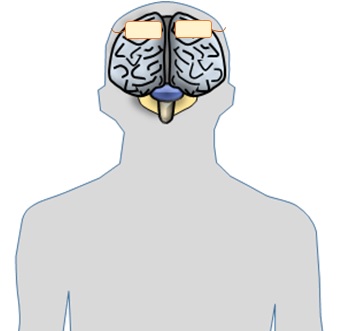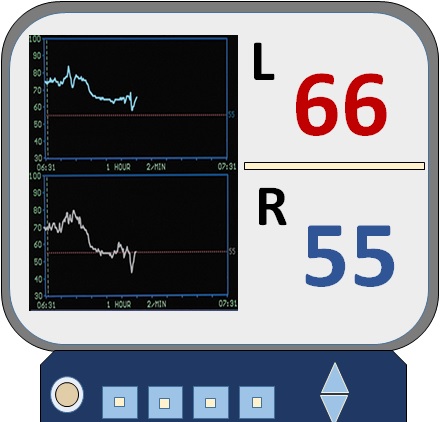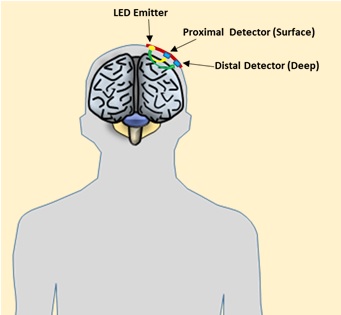Cerebral Oximetry
Introduction
- Regional oxygen saturation (rSO2) monitoring systems permit the continuous noninvasive measurement of cerebral regional oxygen balance within the frontal cerebral cortex.
- Since cerebral rSO2 represents an adjunct physiologic measure, local microcirculatory oxygen balance, it is important to appreciate the fundamental elements of this infrared light-based technology.
- It is intended for use in individuals greater than 2.5 kg at risk for reduced-flow or no-flow ischemic states.
- Intracranial regional hemoglobin oxygen saturation (rSO2) measurement by NIRS is possible because the human skull is translucent to infrared light.
- Absorbance of near infrared light waves by oxy- and deoxy-hemoglobin provides the basis for O2 saturation calculation.

System Component
- Portable Bedside Monitor
- Disposable Optical Sensors
- Two disposable optical sensors applied to the right and left regions of the forehead with adhesive.
- The cerebral oximeter measurement is made by transmitting and detecting low intensity near infrared light through these sensors.
- Light of known wavelengths is sent into the brain through the skin muscle, and the skull. The signals are received and analyzed to determine the oxygen saturation of the blood in the cerebral cortex beneath the sensors.
- This information is displayed in the form numbers and graphs.
Types
- There is a variety of commercially available equipment that allows cerebral tissue spectroscopy.
- Two main types of NIRS monitors are available for use:
- Non-quantative Measurement Monitors (Cerebral Oximeters)
- Quantitative Concentration Measurement Monitors
Nonquantative Measurement Monitors
- Uses 2 wave lengths of near infrared light (730 and 810 nm).
- The nonquantitative cerebral oximeters measures the ratio of oxy-hemoglobin to total hemoglobin levels in the total tissue bed ,including Capillaries, venules, and arterioles, and is expressed as an absolute regional oxygen saturation index.
- The result is displayed as percentage value.


Quantitative Concentration Measurement Monitors
- The quantitative concentration measurements monitor uses 4 wavelengths of near infrared light (775,825,850 and 904 nm), and the sensor contains a laser diode and 3 detectors.
- It can measure a tissue oxygen index, which is the ratio of oxy-hemoglobin or to total hemoglobin.
- This type of monitor displays a change in total hemoglobin concentration and oxy-hemoglobin concentration and does not show the percentage value.